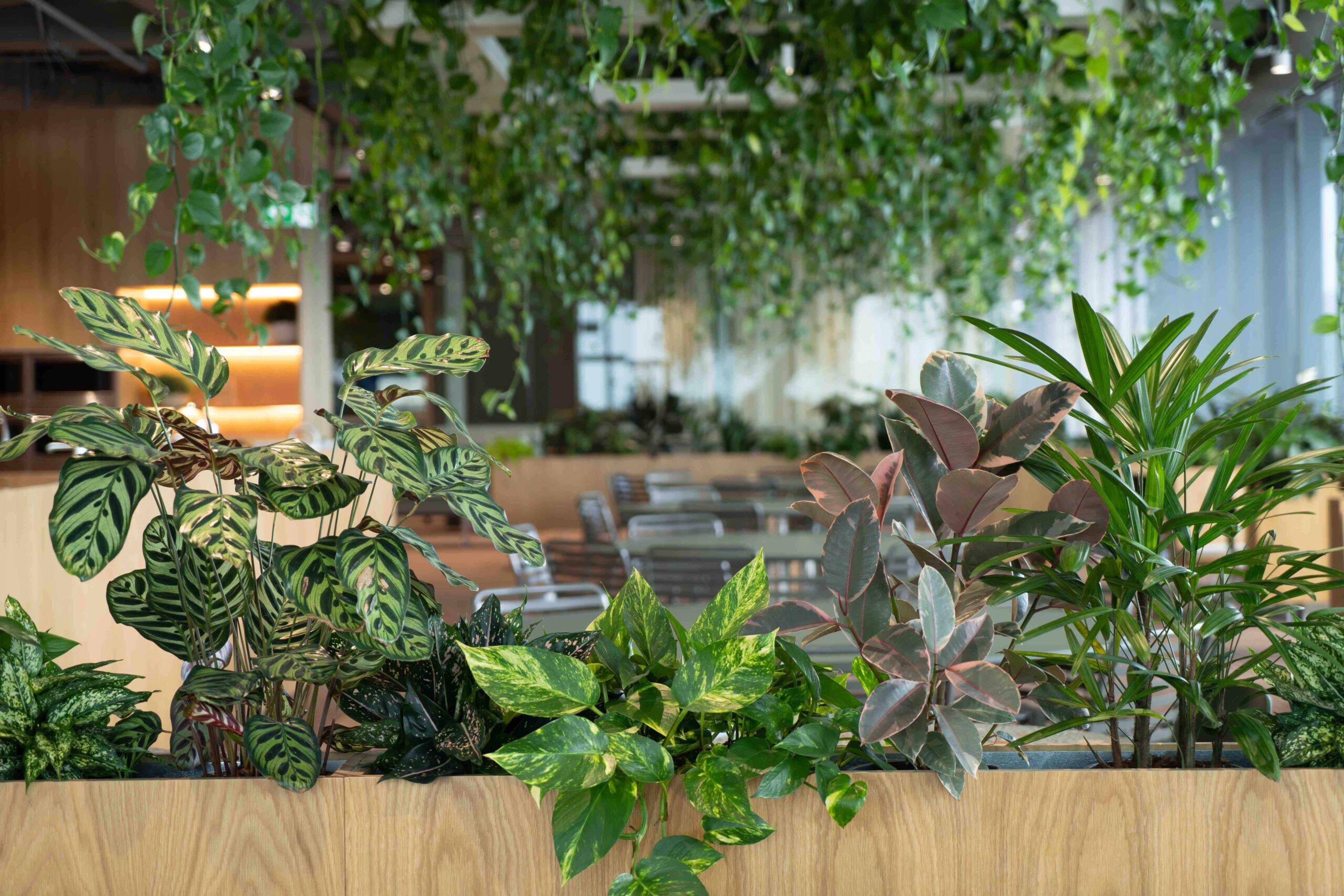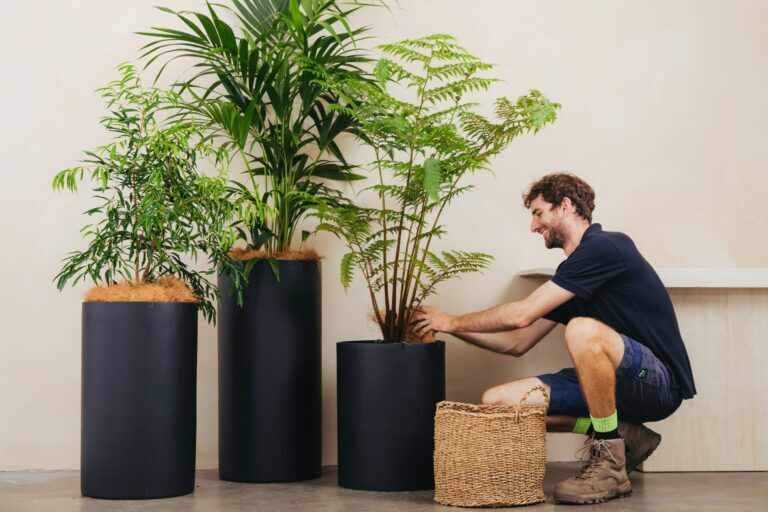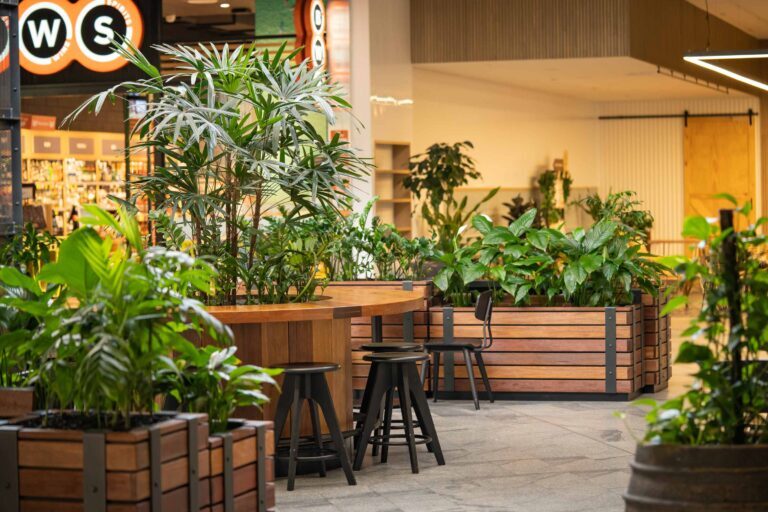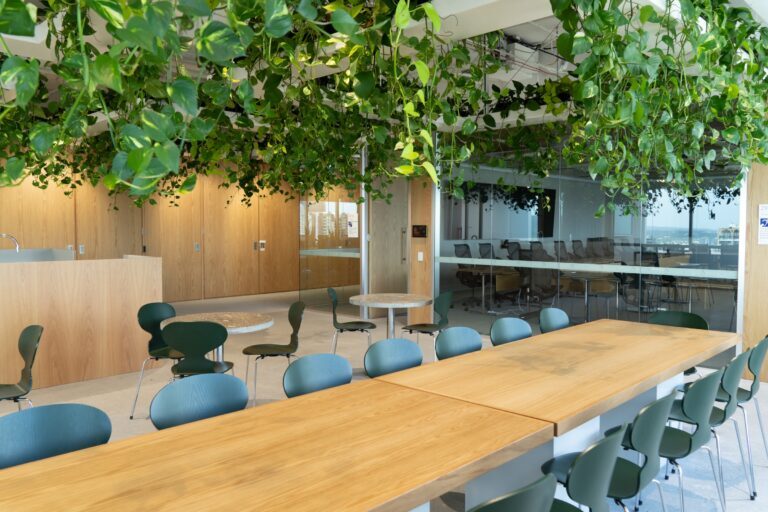Are you struggling to justify the expense of a biophilic office design? Do you see an office strewn with indoor plants and natural light as a “nice to have” but not essential?
We buy software that make our teams more efficient because the business case is clear. More efficient employees equal a more streamlined business equals higher profitability.
And yet, People and Culture initiatives such as green workspaces, staff gardens or nature-based break rooms often fall on the back-burner. Why? Because business owners struggle to see a direct correlation between spend and profitability.
But first, biophilia
Biophilia, a concept popularised by Edward Wilson in 1984, simply refers to our innate love of nature. Biophilic design then is a philosophy that incorporates nature-based elements such as light, air, water, plants and natural landscapes into interior design.
While there are a number of studies that connect health with biophilic design, most businesses see this as a luxury reserved for the offices of tech giants like Twitter and Amazon.
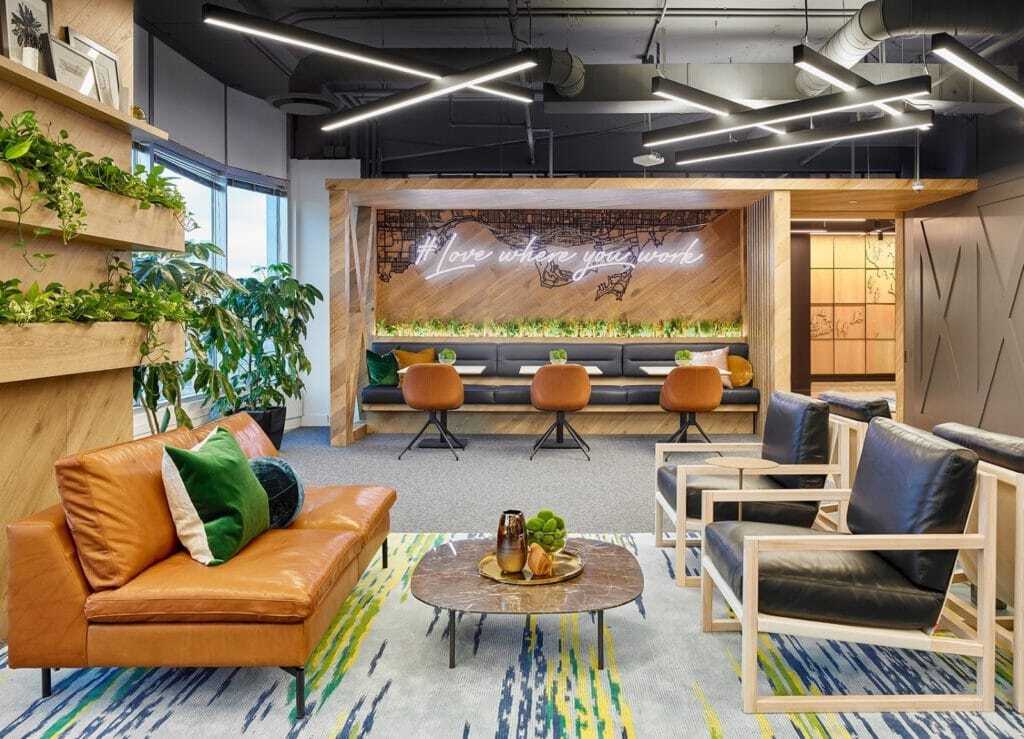
Inside Twitter Toronto. Photo: Scott Norsworthy
But the truth is if you want to increase profitability in a COVID world, a holistic approach to employee health and well-being is essential.
The cost of poor biophilic office design
In 2018, Mercer (1) found that 49% of employees wanted to work for an organisation that protected their health and well-being. Calling them the “cornerstones of an energised workforce”.
Yet 58% (2) of offices had no plants and 47% no natural light.
Still the benefits for greening your workplace go beyond employee preference and beautiful design. In addition to improved air quality, a plant-filled workspace can increase staff productivity by 8% and decrease sick leave taken by 10% (1).
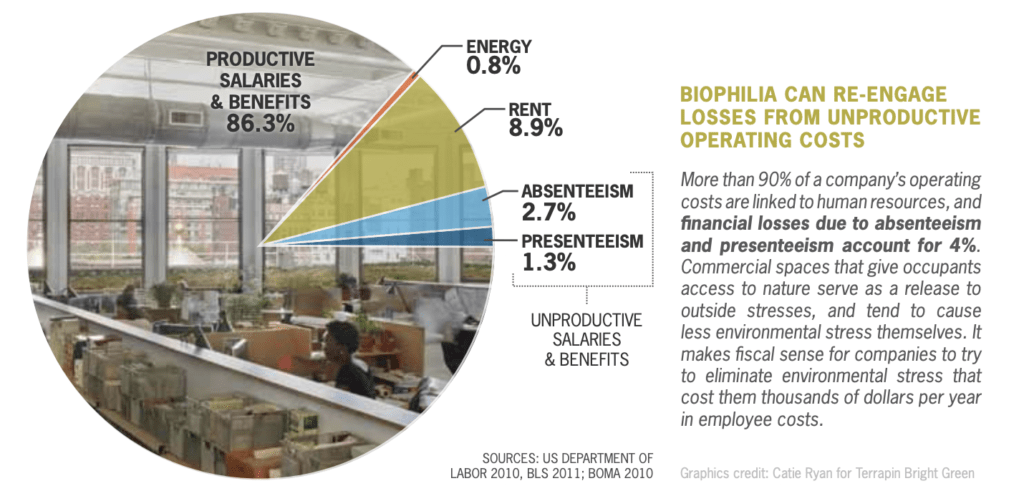
Terrapin Bright Green. Graphic: Catie Ryan
Currently, sick leave alone costs Australian businesses “in excess of $44 billion per annum” or “$578 per employee per day of absence” (4).
By simply “providing employees access to plants, natural views, daylight, and other biophilic design elements” employers are poised to save over $2,600 per employee per year in absenteeism, and over $1,100 in presenteeism (3).
Did You Know?
A person’s view is the primary predictor of absenteeism (3).
Good for health, good for business
Beyond the office, patients with views to nature recover faster (3). While consumers indicated that they would expect to pay up to 25% more than average for general goods in a greener retail setting (5) and 23% more for a hotel room with a view to biophilic elements (3).
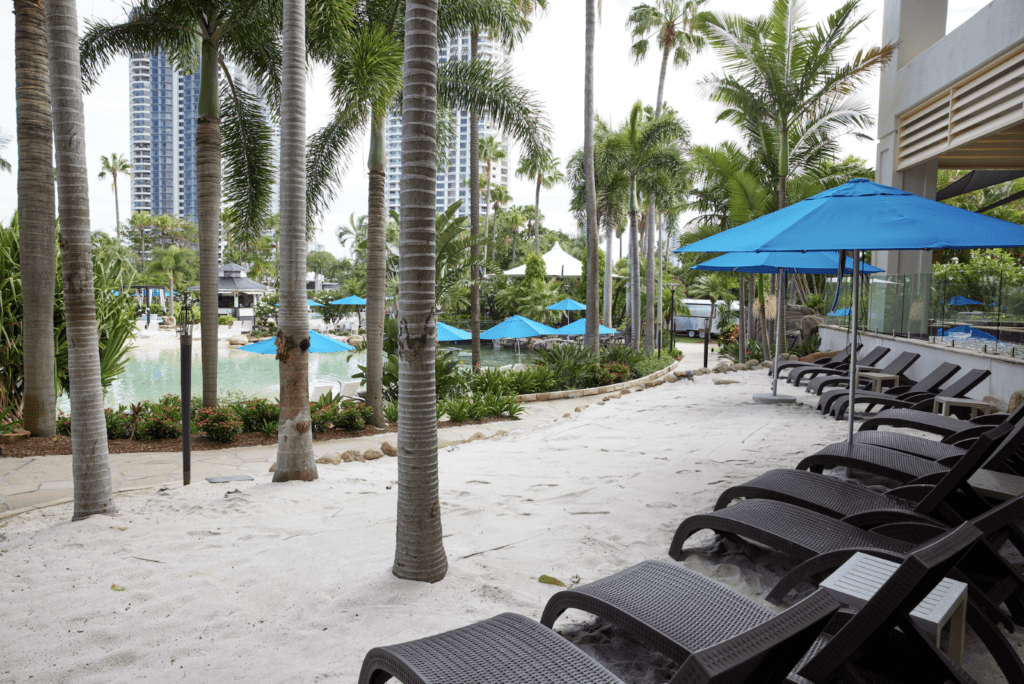
JW Marriot Gold Coast Resort and Spa, an Advance Plants client. Photo: Advance Plants
Perhaps you’re already convinced plants will indeed improve your business’ bottom line, but to what end? What kind of money and time is required to add biophilic design elements into your office?
Indoor plant hire
If you’re familiar with the horticulture industry, you won’t be surprised to know that good quality plants and pots can cost thousands of dollars outright. Then you need to actually keep them alive and looking beautiful in order to enjoy their health benefits.
The most efficient and cost-effective option is to hire the services of companies such as Advance Plants.
Companies like our own will design a bespoke solution for your space, source and install high quality plants, and provide ongoing maintenance. So, you can set and forget your money-saving biophilic office design.
Deloitte Brisbane, an Advance Plants client. Photo: Advance Plants
You may be surprised to learn that indoor plant hire and maintenance starts from as little as $25/week. With the ability to add services such as branded green walls and outdoor landscape maintenance.
The road to be a healthier, greener workplace has moved from luxury to essential in a COVID world; but most importantly, it makes financial sense.
Sources
(1) Mercer, Global Talent Trends 2018
(2) Green Plants for Green Buildings, Global Impact of Biophilic Design in the Workplace, 2015
(3) Terrapin Bright Green, Economics of Biophilia, 2012
(4) Australian Industry Group, Absenteeism and Presenteeism Survey, 2015
(5) Elsevier Science Ltd, Urban Forestry & Urban Greening “The effects of urban retail greenery on consumer experience,” 2010
(6) Journal of Real Estate Finance and Economics, “Pricing Residential Amenities: The Value of a View,” 1998

